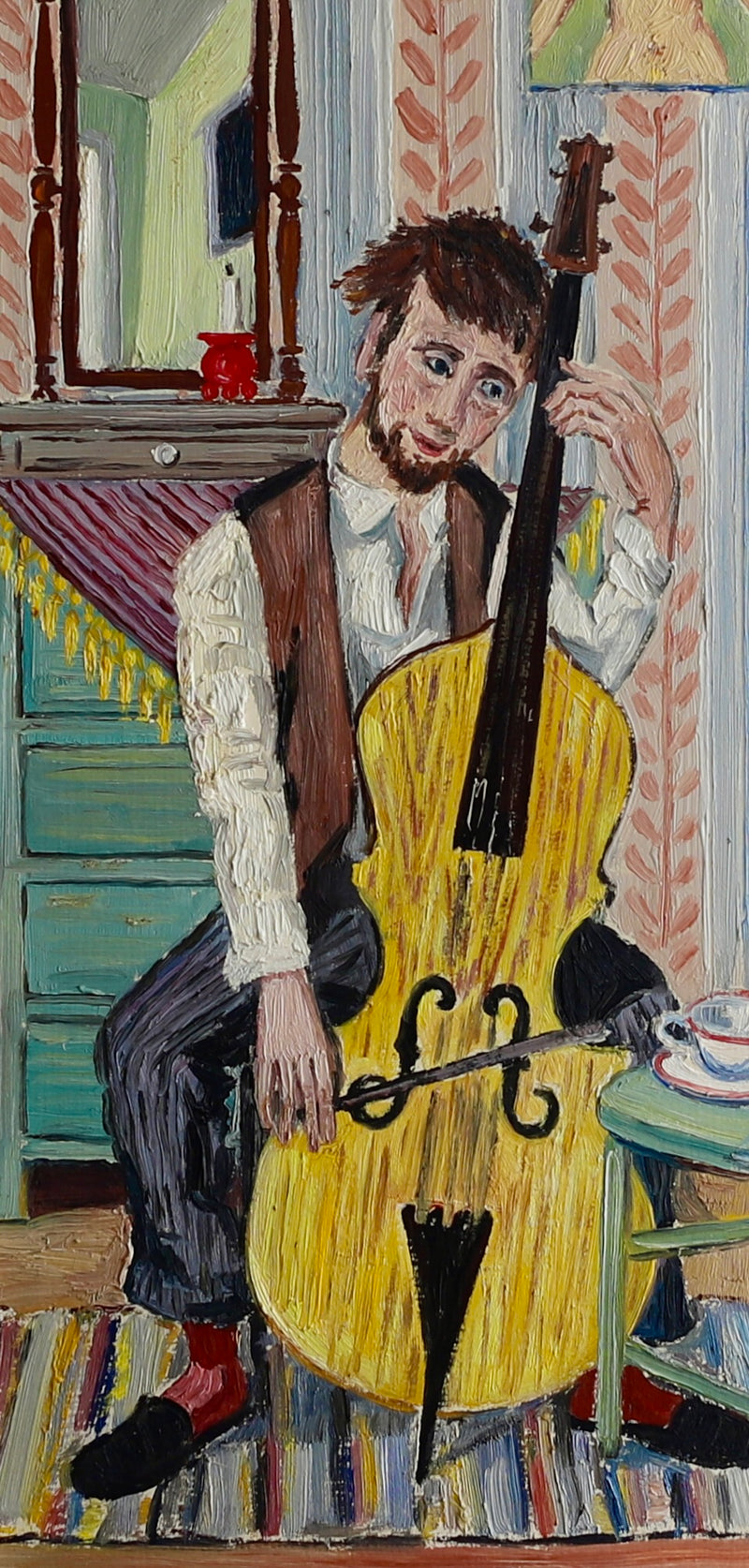How Figurative Oil Painting Transforms Conventional Artistic Expression
How Figurative Oil Painting Transforms Conventional Artistic Expression
Blog Article
The Duty of Emotion and Expression in Figurative Oil Painting: An Extensive Analysis of Subject and Composition
The interplay of emotion and expression in figurative oil painting functions as a critical lens with which one can check out the intricate partnership between subject and make-up. Artists harness different techniques, from shade choice to brushstroke dynamics, to grow emotional resonance within their jobs. This nuanced orchestration not only shapes visitor assumption however likewise invites a much deeper query into just how these components integrate to show the complexities of human experience. As we discover this abundant surface, one need to think about just how particular case researches illuminate the more comprehensive ramifications of these creative choices.
Comprehending Emotion in Art
Emotion in art functions as a powerful conduit for expression, enabling musicians to share complex feelings via their work. In figurative oil paint, this psychological depth is frequently represented through the depiction of the human number, capturing the nuances of human experience. The option of subject, color combination, and brushwork all add to the psychological resonance of an item.
Artists regularly attract upon personal experiences, societal concerns, or global themes to evoke feelings in the visitor. As an example, a picture might show susceptability, while a vibrant figure in activity can symbolize flexibility or chaos. These psychological strings attach the viewer to the artwork, fostering a dialogue that transcends the visual medium.
Additionally, the interaction between light and shadow can magnify emotional intensity, guiding the customer's gaze and attracting attention to specific components within the structure. Making use of texture in oil painting even more includes layers of intricacy, inviting a tactile reaction that enhances the emotional experience. In general, understanding emotion in art is essential for appreciating the nuances that identify metaphorical oil painting, as it transforms mere depiction right into a profound exploration of the human condition.
Key Elements of Composition
In the realm of metaphorical oil paint, the make-up acts as the underlying structure that arranges aesthetic components and enhances the psychological story. Crucial parts of make-up include balance, comparison, focal point, and rhythm, each adding to the total impact of the artwork.
Balance describes the distribution of aesthetic weight within the painting, which can be achieved with in proportion or asymmetrical setups. A well-balanced composition supplies stability, permitting the audience to involve with the piece sympathetically - figurative oil painting. Contrast, on the various other hand, involves juxtaposing different components, such as light and dark or cozy and cool colors, to lead the audience's eye and stimulate emotional responses
The focal point is important, as it guides focus to the most significant part of the painting, typically highlighting the psychological core of the story. By masterfully integrating these key elements, artists can craft psychologically resonant and compelling metaphorical oil paints that astound and engage their target market.
Topic Matter and Its Effect
Topic plays a critical function in figurative oil painting, as it not only acts as the foundation for the narrative but likewise shapes the customer's analysis and psychological involvement with the artwork. The choice of subject matter-- be it a solitary figure, a team dynamic, or a thematic depiction-- straight affects the emotional environment communicated to the audience.

For example, portraits typically evoke personal links, revealing the intricacies of human expression and personality, while scenes portraying communal activities can develop a sense of belonging or fond memories. The cultural and historic context of the subject matter improves the visitor's understanding, triggering deeper reflections on societal norms, worths, and the human condition.
Different topics additionally create varying levels of involvement; a dramatic dispute depicted with numbers in stress may generate sensations of stress and anxiety or compassion, while serene landscapes can conjure up serenity and reflection. Ultimately, the influence of topic in metaphorical oil paint is profound, as it acts as a conduit for emotional vibration, leading the audience's action and analysis, and fostering a connection between the art work and the viewer. This interplay is essential for the effective interaction of the artist's intent.
Strategies for Evoking Feelings
The effectiveness of figurative oil paint in conveying emotions is considerably affected by the techniques used by the musician. Among one of the most essential techniques is the usage of shade theory, where the calculated option of tones can stimulate details psychological feedbacks. Cozy shades, such as oranges and reds, usually evoke sensations of enthusiasm or hostility, while cooler tones like blues and eco-friendlies have a tendency to evoke calmness or sadness.
An additional vital method is the manipulation of light and shadow, referred to as chiaroscuro. This approach improves the three-dimensionality of figures, creating dramatic contrasts that can intensify emotional depth. The placement of light can guide viewers' feelings, highlighting details aspects of the structure.
Brushwork also plays an important function; loose, expressive strokes can share power and spontaneity, whereas smoother methods might recommend harmony or precision. The plan of topics within the structure can influence psychological influence. Close distance can suggest affection, while range may suggest isolation.
Ultimately, the mix of these techniques allows musicians to craft narratives that resonate with the customer, transforming a plain visual experience right into an evocative psychological journey. - figurative oil painting

Study of Significant Functions
Taking a look at notable jobs of metaphorical oil painting discloses how different strategies are employed to stimulate powerful feelings. One excellent case is Edvard Munch's "The Scream," where the distorted number and swirling history convey existential dread. Munch's use shade-- deep blues and vibrant oranges-- escalates the emotional effect, showcasing just how scheme options can form viewer experience.
One more considerable job is Pablo Picasso's "Les Demoiselles d'Avignon." Here, fragmented types and strong brushstrokes reflect a tumultuous emotional landscape, challenging typical depictions of the women figure. Picasso's ingenious structure not only captures the viewer's attention yet additionally welcomes consideration on styles of identity and sexuality.
Additionally, Frida Kahlo's "The Two Fridas" offers an emotional expedition of duality and self-identity. The different numbers, linked by a common heart, exhibit Kahlo's emotional deepness and individual narrative. figurative oil painting. Her meticulous focus to information and symbolic aspects serve to engage viewers on a natural degree
These study highlight the profound link in between feeling and structure in figurative oil paint, exposing how artists harness technique to interact complex sensations and stories that reverberate throughout time and society.

Final Thought
Finally, the interaction of emotion and expression in view it now figurative oil paint substantially enhances the customer's experience and analysis of the artwork. Via a careful choice of subject and compositional strategies, artists convey profound stories that reverberate on both global and individual levels. The application of shade brushwork, concept, and chiaroscuro check my site more magnifies emotional depth, changing each canvas right into a powerful reflection of the intricacies of the human experience.
In figurative oil painting, this emotional deepness is typically represented through the representation of the human number, capturing the nuances of human experience.In addition, the interaction between light and shadow can magnify psychological strength, guiding the audience's stare and attracting attention to particular aspects within the make-up. The usage of texture in oil painting additionally includes layers of complexity, inviting a responsive feedback that improves the emotional experience.The focal point is important, as it directs interest to the most substantial component of the painting, typically highlighting the emotional core of the narrative. Ultimately, the impact of subject matter in figurative oil painting is extensive, as it offers as an avenue for psychological vibration, assisting the customer's action and analysis, and Your Domain Name promoting a connection between the artwork and the viewer.
Report this page